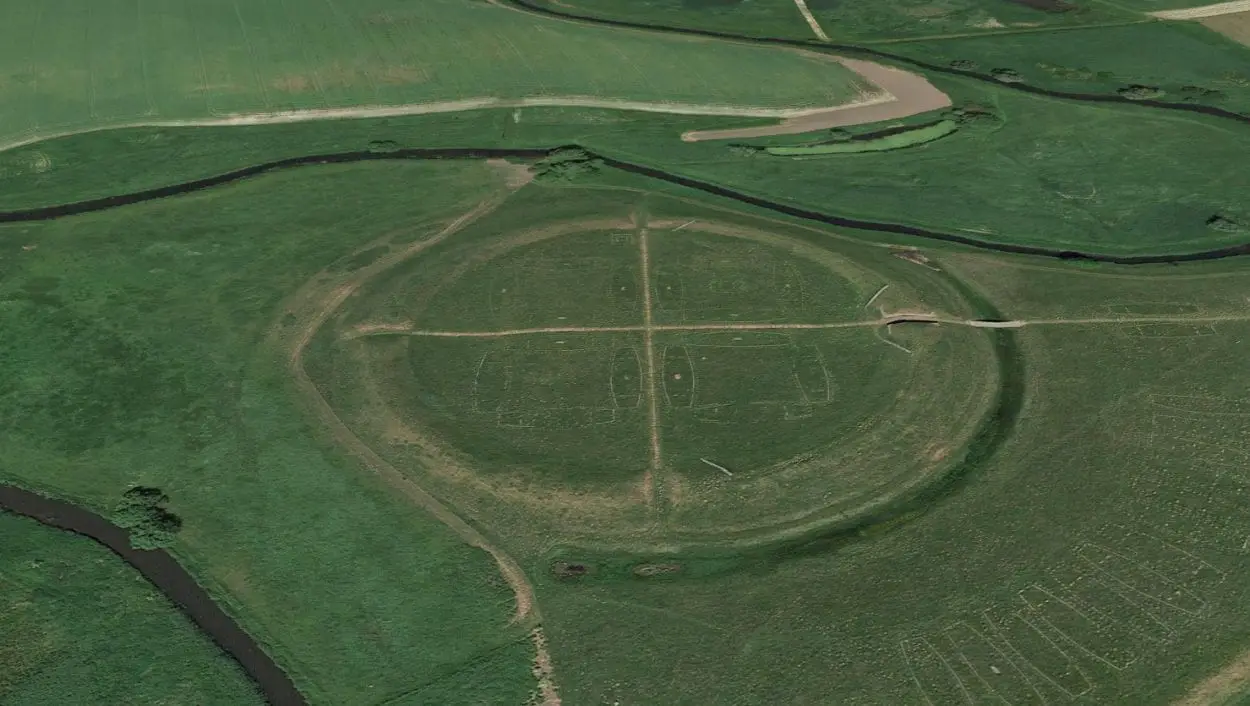A trelleborg or ring fort was a circular fortification built across Denmark and Sweden during the Viking age.
Similar structures have been found throughout Northern Europe, particularly in Ireland, but none have the same strict and precise geometrical design of the Scandinavian ring fortresses.
Around 974 the Danish Viking king Harald Bluetooth lost control of the Danevirke and parts of Southern Jutland to the Saxons. The entire complex of fortifications, bridges and roads which were built around 980 are presumed by some to be Harald’s work, and part of a larger defensive system.
Another theory suggests that the forts were built as boot camps for Sweyn Forkbeard’s troops prior to his invasion of England.
To date, archaeologists have uncovered 7 ring forts, with some possible sites currently under investigation that includes Rygge in Norway.
1 – Aggersborg
Aggersborg is the largest ring fort in Denmark, located near Aggersund and dates from 980 CE. The fort had an inner diameter of 240 metres with four main roads arranged in a cross, connecting the inner centre with the outer circular defensive ring. Archaeologists believe that Aggersborg could have housed as many as 5,000 men in 48 longhouses.
2- Borrering
Borrering, also called Vallø Borgring was a ring fort located on Zealand, southwest of Copenhagen in Denmark. The circular fort has a diameter of 145 metres and was protected by 10-metre ramparts, reinforced with a palisade of wooden stakes. Construction dates from around 970 or 980 CE during the reign of King Harald “Bluetooth” Gormsson.
3 – Borgeby Castle
The present Borgeby Castle sits on the site of an 11th-century Telleborg type fortress in Scania, southern Sweden. The fort has a diameter of 150 metres with surrounding circular earthworks and dates from the reign of King Harald Bluetooth.
4 – Fyrkat
Fyrkat dates from 980 CE and was constructed near Hobro in Northern Jutland, Denmark. The fort has an inner diameter of 120 metres, surrounded by earthworks and defensive ramparts. Fyrkat contained up to 16 longhouses that were separated into quarters by roads that met in the centre of the fort.
5 – Trelleborg, Slagelse
The Trelleborg west of Slagelse on the Danish island of Zealand is arguably the best preserved of the Viking ring fortresses.
Trelleborg is believed to have been ordered by King Harald Bluetooth in the year 980 CE as a means to command the Great Belt and its sea traffic between the islands of Zealand and Funen. Similar to the other Viking ring castles found so far, the Trelleborg at Slagelse was designed as an exact circle with two roads crossing at right angles in the geometric center, leading to four gates with two gates always opposite each other. In each of the four quarters stood four almost identical longhouses arranged in a square.
6 – Nonnebakken
Nonnebakken is a hill located in Odense, Denmark. Built during the reign of Sweyn Forkbeard around 980-1000 CE, the fort commanded passage along the route of the Odense River. Nonnebakken has an inner diameter of 120m with surrounding circular earthworks. Sadly, the archaeological remains of Nonnebakken took heavy damage during the late 19th century when a building for the Odd Fellow lodge was constructed on the site.
7 – Trelleborgen
Trelleborgen is a partially reconstructed ring fortress, located in the town of Trelleborg, Sweden. The fort was built from turf with a wooden palisade, possibly under the orders of King Harald Bluetooth in 980 CE.
Header Image Credit : Google Earth – Map data ©2021 Google





